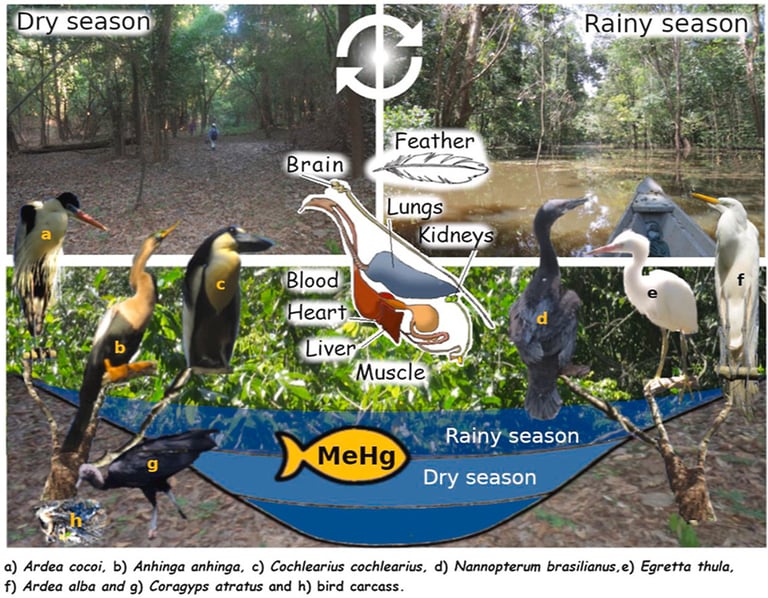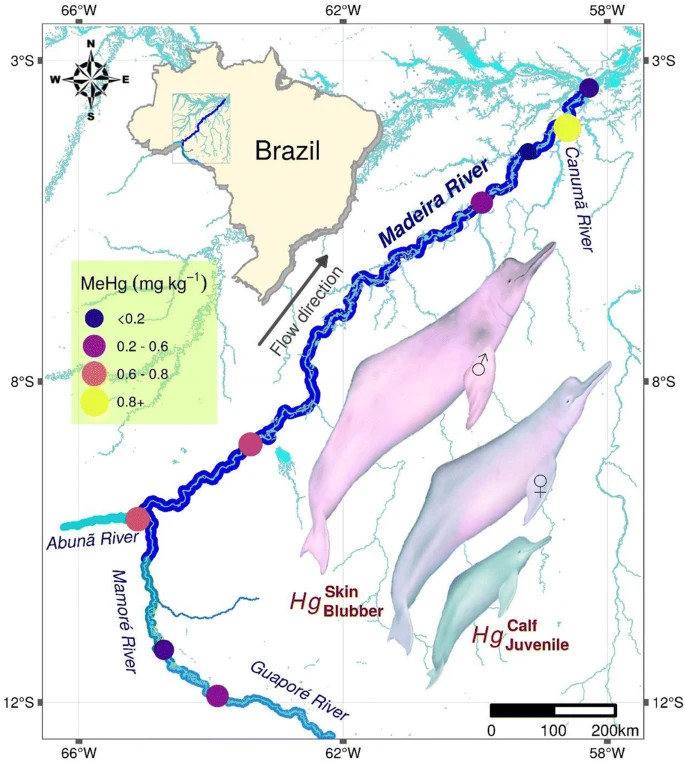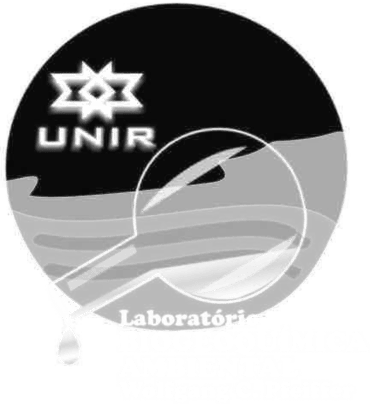Publicações 2021
Amazon, Water Quality, Indigenous Amazonians, Mercury in fish, Mercury in birds, Mercury in dolphins, Gold mining
ARTIGOS & PERIÓDICOS
Assessment of Decontamination and Reuse of Disposable Filter Funnels Used in Microbiological Water Quality Tests
Camille Zimmer, Alexandra Cassivi, Celia C Baía, Elizabeth Tilley, Robert Bain, Richard Johnston and Caetano C Dorea
Abstract: To monitor safely managed drinking water services, an increasing number of countries have integrated water quality testing for Escherichia coli into nationally-representative household surveys such as the Multiple Indicator Cluster Surveys (MICS). However, plastic waste generated during such water quality testing programs, mostly through the use of pre-sterilized disposable materials, is non-negligible. The objective of this study was to evaluate several re-use protocols for disposable filter funnels used by the MICS water quality test kits. Decontamination and re-use protocols were assessed in centralized laboratory and decentralized field settings and neither yielded positive results. Re-use of 100 mL sterile funnels decontaminated with an alcohol wipe resulted in a higher incidence of false positive results (i.e., positive contamination when processing sterile water), both in the laboratory and field; therefore, a higher proportion of positives tests can be expected if these components are re-used. Further improvements to the decontamination technique and training are needed before material re-use can be reliably adopted. Autoclaving the funnels for re-use is feasible, provided that there is capacity to re-package and distribute funnels in a sterile manner.
Mercury in wild animals and fish and health risk for indigenous Amazonians
Débora Francielly de Oliveira, Bruno Soares de Castro, Maria Cristina Nery do Nascimento Recktenvald, Walkimar Aleixo da Costa Júnior, Fábio Ximenes da Silva, Cristiano Lucas de Menezes Alves, Josiel Dimas Froehlich, Wanderley Rodrigues Bastos & Ari Miguel Teixeira Ott
Abstract: Total mercury (T-Hg) was determined in fish and wild animal meat consumed in indigenous villages in the Brazilian Amazon region, where there is no history of gold mining. The analyses were performed in an atomic absorption spectrophotometer by generation of cold vapour. Regardless of the dietary habit, 42.0% of the fish had levels of T-Hg higher than the values considered as safe for human health by the World Health Organisation. Exposure to mercury in the villages was higher due to the consumption of fish compared to the consumption of meat of wild animals. Carnivorous species showed a higher concentration of T-Hg, both in fish and in wild animals. It is preferred to consume meat from fish and non-predatory wild animals, which can reduce the risk of diseases resulting from high concentrations of mercury in the body of the studied indigenous people.
Mercury in birds (aquatic and scavenger) from the Western Amazon
Angela N. Dias dos Santos, Maria Cristina N. do N. Recktenvald, Dario P. de Carvalho, Emília L. Bortoleto Puerta, Izidro F. de Sousa-Filho, José G. Dórea, Wanderley R. Bastos


Graphical Abstract
Abstract: In the Amazon rainforest, methylmercury (MeHg) is easily biomagnified and bio-accumulated in the aquatic food chain. This unique biome has been studied for occupational and environmental issues related to human health and contamination through fish consumption; however, wildlife studies have not yet addressed fish-eating birds. Different species of birds categorized by foraging strategies and life-stages were studied in the Madeira River Basin (Western Amazon rainforest). Feather and tissue (muscle, liver, kidneys, lungs, heart, brain, and blood) samples were collected opportunistically from six bird species feeding on fish and aquatic fauna and a scavenger (a saprophagous species) during the low-water season (July 2017). All collected samples were analyzed for total Hg (THg); methyl-Hg (MeHg) was determined only in feathers. The mean THg concentrations in feathers (dw) were as follows: Ardea cocoi (4.05 µ.g-1, n = 51) > Egretta thulla (3.94 µ.g⁻¹, n = 5) > Ardea alba (3.80 µ.g⁻¹, n = 61) > Anhinga anhinga (3.69 µ.g⁻¹, n = 8) > Nannopterum brasilianus (3.07 µ.g⁻¹, n = 10). The scavenger Coragyps atratus showed mean THg in feathers (9.93 µ.g⁻¹, n = 30) to be significantly higher than in fish-eating birds. Across species, THg levels in feathers correlated significantly with THgmuscle (p = 0.022) and THgbrain (p = 0.002). THg concentrations varied in tissues (feather > liver > kidneys > lungs > heart > muscle > blood > brain). The Hgbrain:Hgfeather, Hgbrain:Hgmuscle, and Hgbrain:Hgblood ratios were 0.031, 0.503 and 0.516, respectively. The mean [MeHg:THg] ratio in feathers from aquatic birds varied between species from 14 to 74% with a mean of 38%. Scavenger birds that forage in the terrestrial Amazonian environments concentrate more THg than species that forage in the aquatic environment. None of the aquatic species showed THg concentration in internal organs that were above threshold for risk of Hg toxicity; additionally, they are not listed in the categories of threat by the International Union for Conservation of Nature (IUCN).
Total mercury and methylmercury in river dolphins (Cetacea: Iniidae: Inia spp.) in the Madeira River Basin, Western Amazon
Melissa S. Barbosa · Dario P. Carvalho · Waleska Gravena · Ronaldo de Almeida · Marília H. Mussy · Eduardo A. Sousa · Igor B. B. Holanda · Izidro F. de Sousa-Filho · Wanderley R. Bastos


Graphical Abstract
Abstract: In the Amazon, mercury (Hg) contamination comes from ASGM operations along with soil remobilization processes associated with deforestation. The objective of this study was to evaluate the exposure to methylmercury (MeHg) and total mercury (THg) in 88 samples of skin and blubber tissue obtained from live captured river dolphins (Inia boliviensis, Inia geoffrensis, and Inia spp.) in the Madeira River Basin. THg and MeHg measurements were performed by CV-AAS and GC-AFS, respectively. We also calculated the daily intake rate (DIR) of THg (wet weight) by Inia spp. THg levels in blubber tissue of adult river dolphins (Inia spp.) ranged from 0.015 to 3.804 mg kg⁻¹, while MeHg concentrations in blubber tissue varied from 0.04 to 2.65 mg kg-1 and in −1skin tissue from 0.09 to 0.66 mg kg . There were no significant differences in MeHg concentration in blubber (p = 0.616) and skin (p = 0.498) tissue samples between adult males and females in the different sampling locations. The adult animals showed differences in THg and MeHg concentrations significantly higher than in the calves. The estimate of the DIR of the genus Inia ranged from 1.17 to 12.35 µg kg⁻¹ day⁻¹ (bw), from the consumption of fish species with herbivorous to piscivorous habits, respectively. More biological and ecological data, such as the precise determination of age, mediated length, weight, and diet of river dolphins, are necessary to verify the Hg biomagnification. However, our data indicate that bioaccumulation is an active process in the dolphins of the Madeira River Basin.
Mercury in blood, hair, and feces from subsistence fish-eating riverines of the Madeira River Basin (Western Amazon)
Vanessa A. Mendes, Dario P. de Carvalho, Ronaldo de Almeida, Maria Cristina N. do N. Recktenvald, Olakson P. Pedrosa, Izidro F. de Sousa-Filho, José G. Dórea, Wanderley R. Bastos
Abstract: Background: The Madeira River (Amazon Basin) has been impacted by activities related to artisanal and small-scale gold mining (ASGM), deforestation and burning (for timber, agriculture, and hydroelectric dam pro jects). All these activities contribute to environmental mercury (Hg) release and cycling into the Amazon ecosystem and thus to changing lifestyles. Method: We assessed exposure to total and MeHg in two small riverine communities of the Madeira River (Amazon): Lago Puruzinho (LP, n = 26 families) and São Sebastião do Tapurú (SST, n = 31 families). Samples of human hair (n = 137), blood (n = 39), and feces (n = 41) were collected from adults and children (0–15 years of age).
Results: In women of childbearing age from LP village, the mean blood total-Hg (THg) (45.54 ± 24.76 µ.L⁻¹) and MeHg (10.79 ± 4.36 µ.L⁻¹) concentrations were significantly (p = 0.0024; p < 0.0001, respectively) higher than in women from SST village (THg: 25.32 ± 16.75 µ.L⁻¹; MeHg: 2.32 ± 1.56 µ.L⁻¹) village; the trend in hair-Hg persisted but was statistically significant (p < 0.0145) only for THg (LP, 11.34 ± 5.03 µ.g⁻¹; SST, 7.97 ± 3.51 µ.g⁻¹). In women, the median hair:blood ratio of total Hg was 269. In children, the mean hair THg concentrations were 6.07 ± 3.60 µ.g⁻¹ and 6.47 ± 4.16 µ.g⁻¹ in LP and SST; thus, not significantly different (p = 0.8006). There was a significant association (p < 0.001) between hair-Hg concentrations of mothers and their respective children. The excretion of Hg in feces of women (0.52 μ g.g⁻¹ dw) was not significantly different from children (0.49 µ.g⁻¹ dw). The only statistically significant correlation between Hg in feces and in hair was found in children, (n = 16, rs = 0.38, p = 0.005). Significant relationship was seen between the levels of THg in blood and hair of women from LP and SST. Based on hair-Hg concentrations, fish consumption rate ranged from 94.5 to 212.3 g.day⁻¹.
Conclusion: Women and children excrete THg in feces in comparable concentrations. However, the mean fish consumption rate and blood MeHg are higher in the most remote villagers. Mother`s hair-Hg concentration is a good predictor of children’s hair-Hg.





